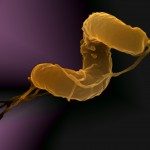Link to Pubmed [PMID] – 15359270
EMBO Rep 2004 Oct; 5(10): 1000-6
Toll-like receptor 2 (TLR2) has been shown to recognize several classes of pathogen-associated molecular patterns including peptidoglycan (PG). However, studies linking PG with TLR2 recognition have relied mainly on the use of commercial Staphylococcus aureus PG and have not addressed TLR2 recognition of other PG types. Using highly purified PGs from eight bacteria (Escherichia coli, Pseudomonas aeruginosa, Yersinia pseudotuberculosis, Helicobacter pylori, Bacillus subtilis, Listeria monocytogenes, Streptococcus pneumoniae and S. aureus), we show that these PGs are not sensed through TLR2, TLR2/1 or TLR2/6. PG sensing is lost after removal of lipoproteins or lipoteichoic acids (LTAs) from Gram-negative and Gram-positive cell walls, respectively. Accordingly, purified LTAs are sensed synergistically through TLR2/1. Finally, we show that elicited peritoneal murine macrophages do not produce tumour necrosis factor-alpha or interleukin-6 in response to purified PGs, suggesting that PG detection is more likely to occur intracellularly (through Nod1/Nod2) rather than from the extracellular compartment.


